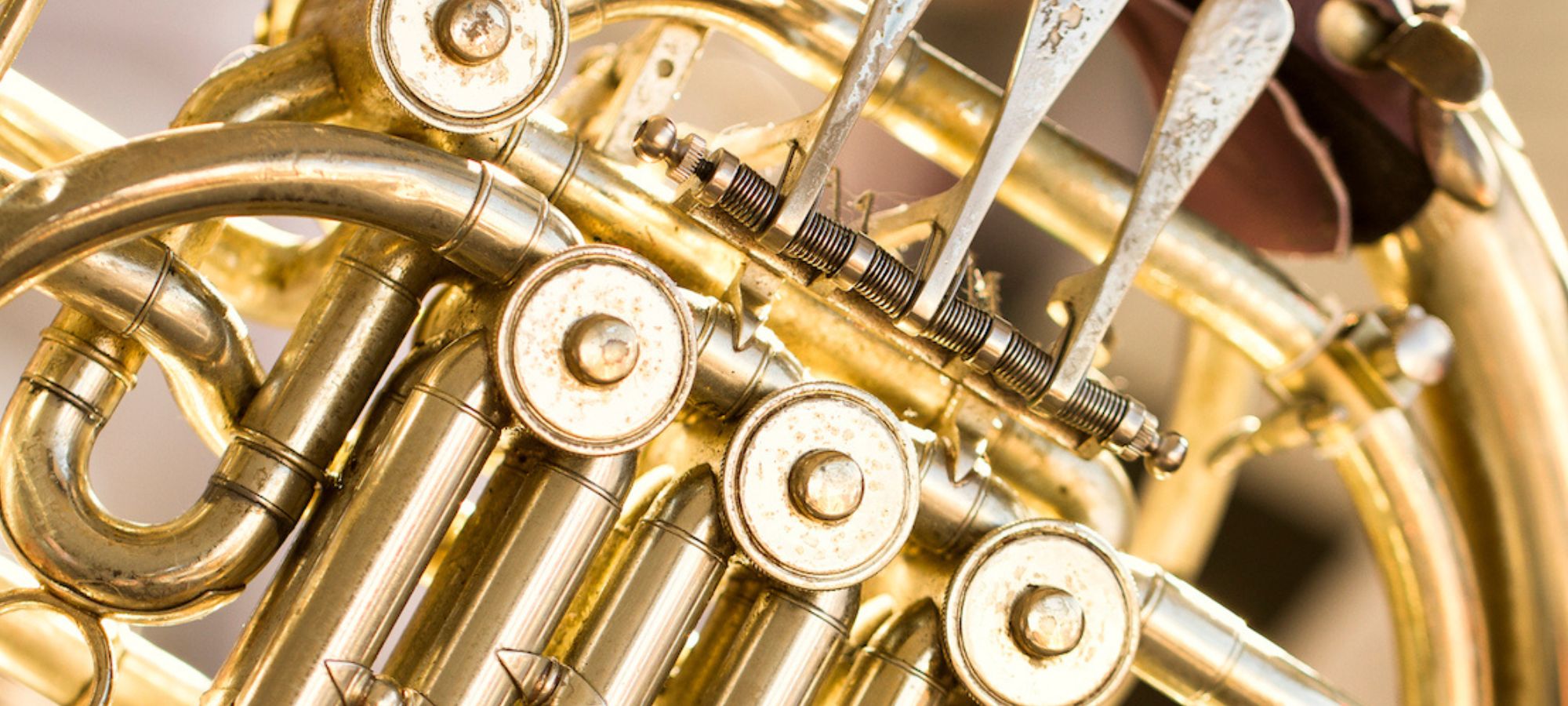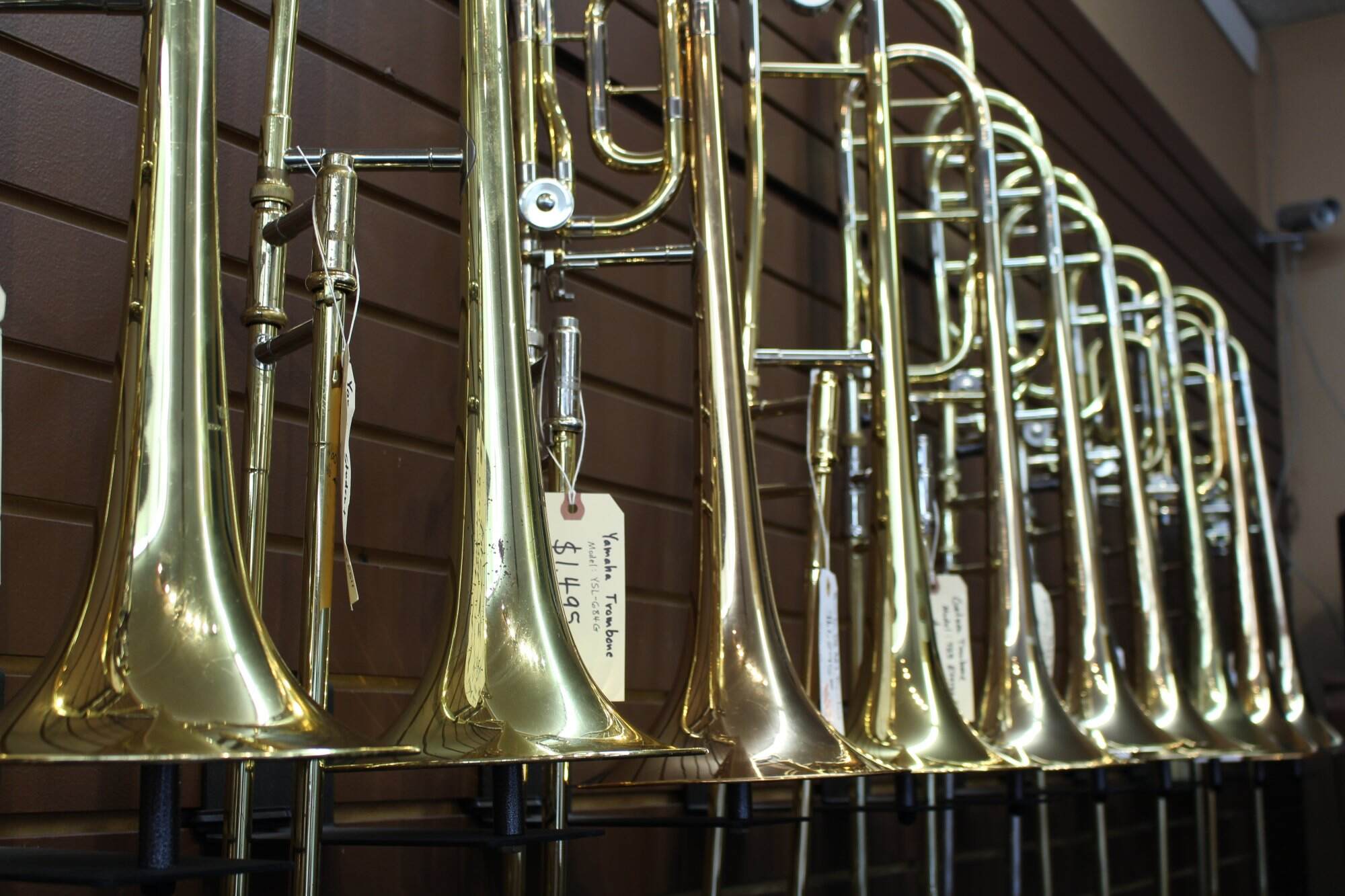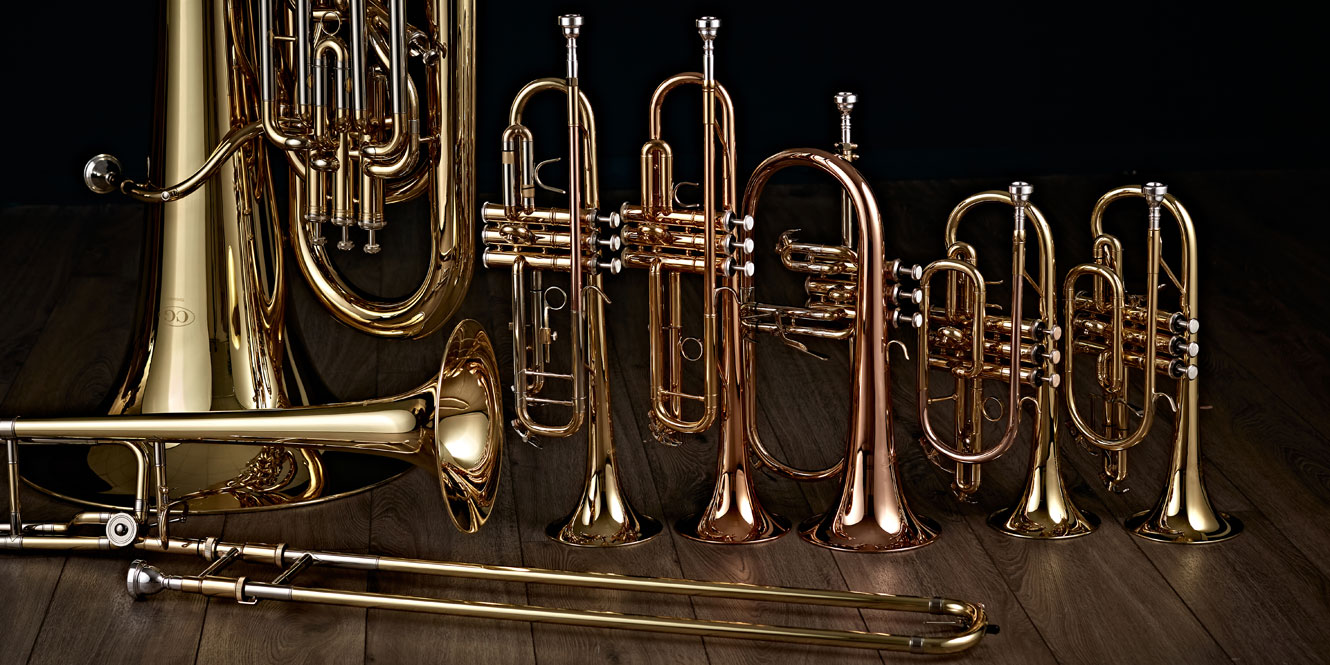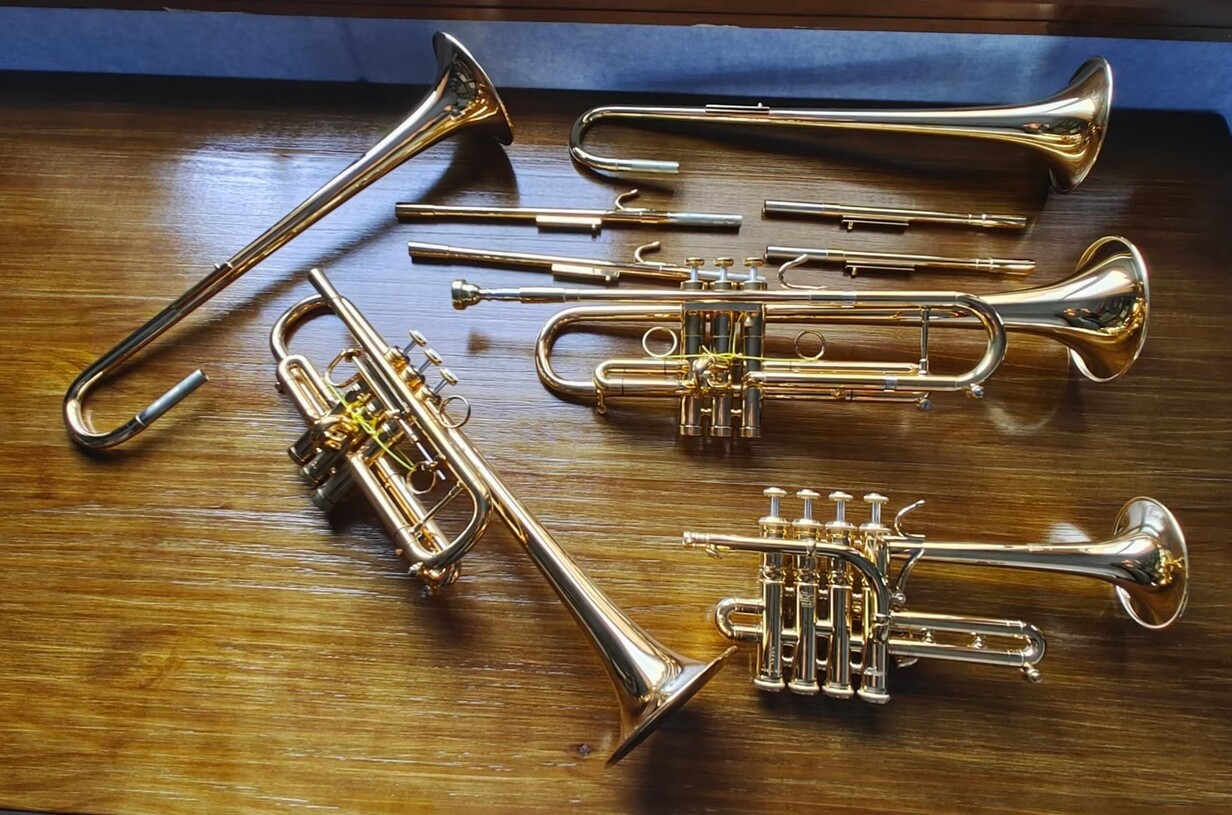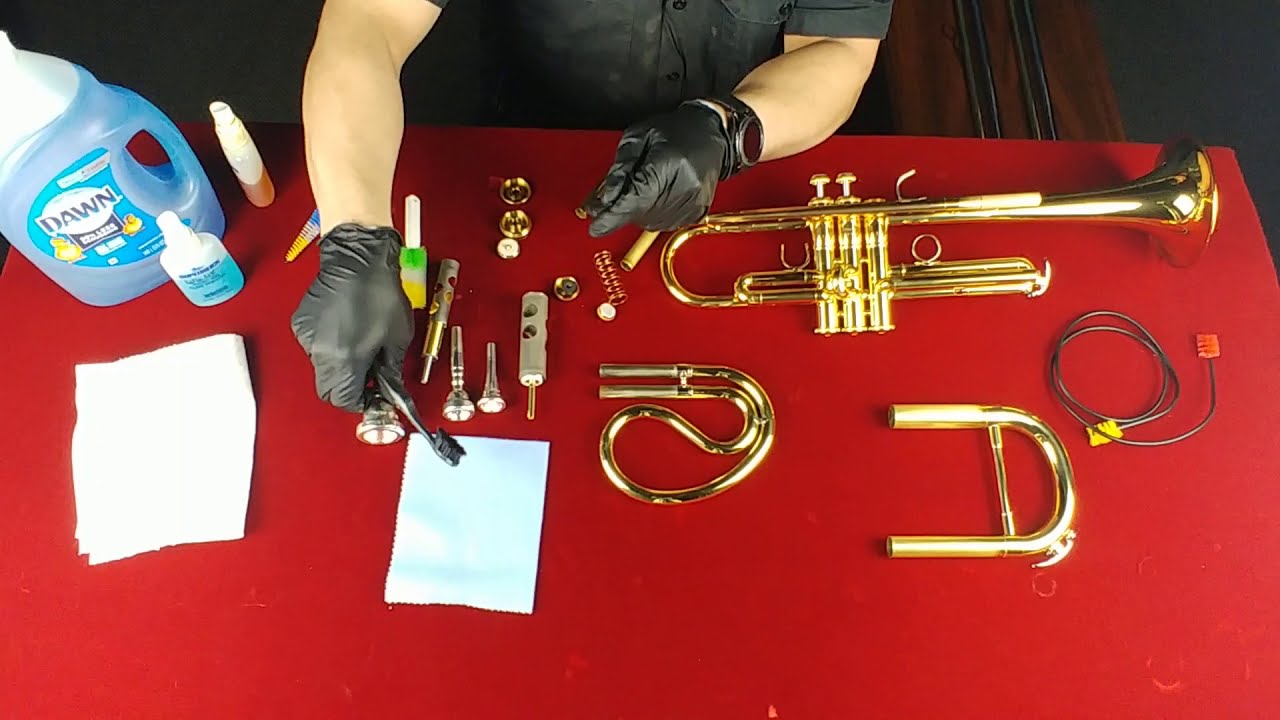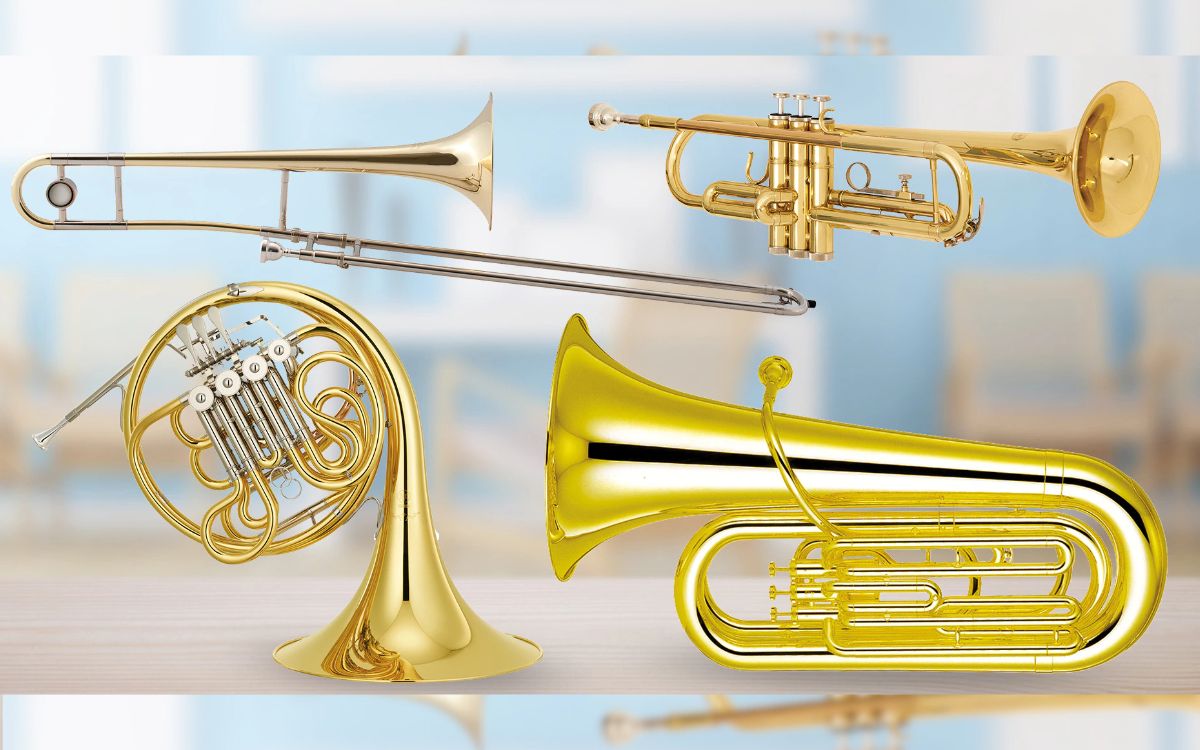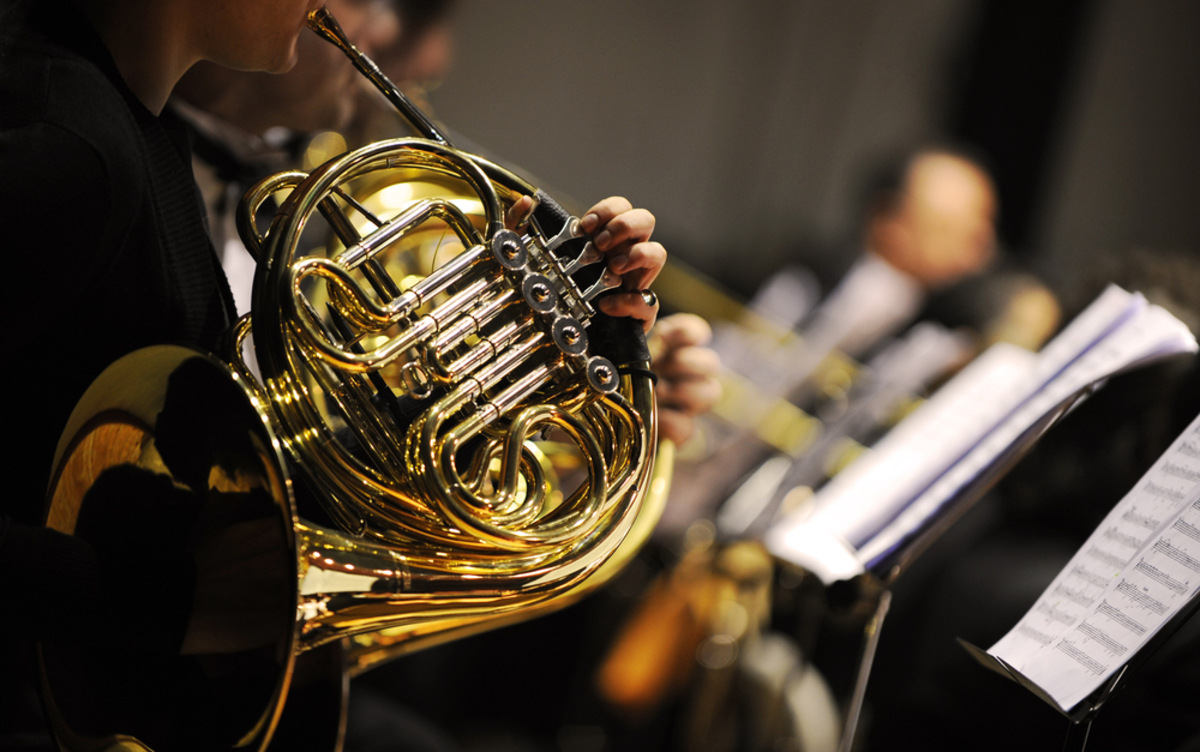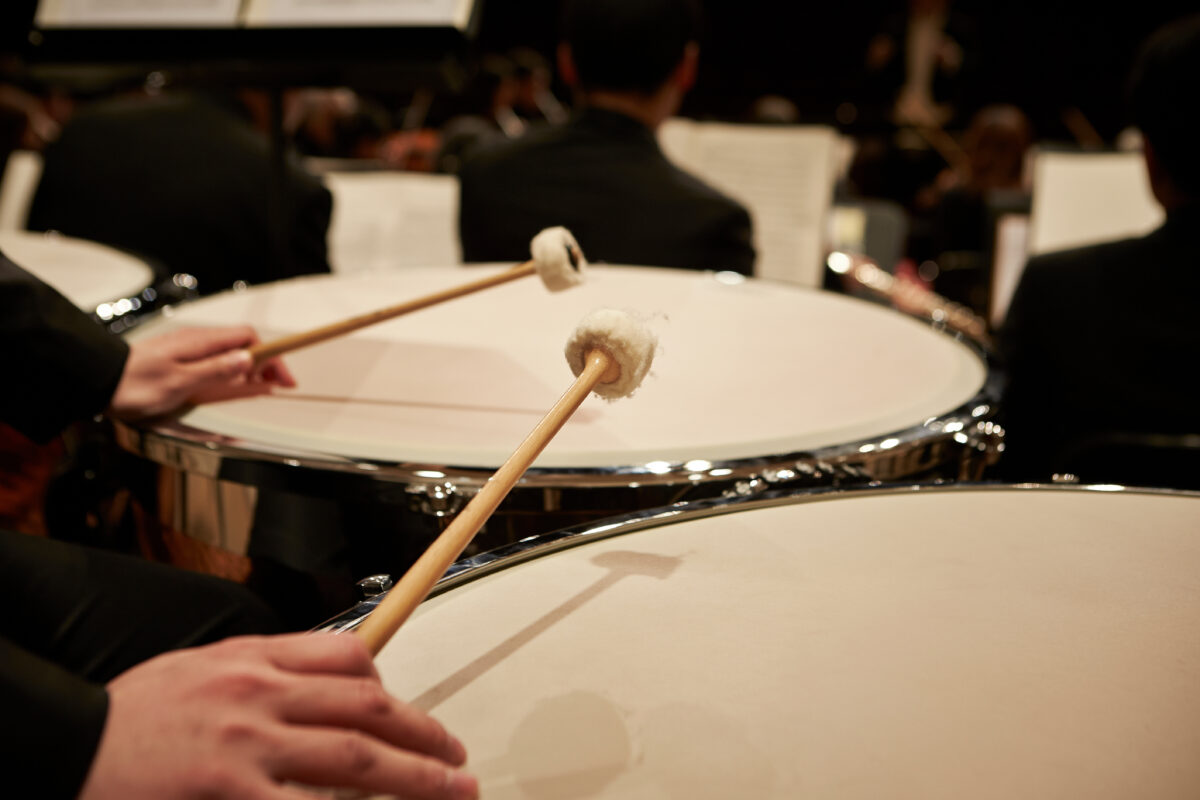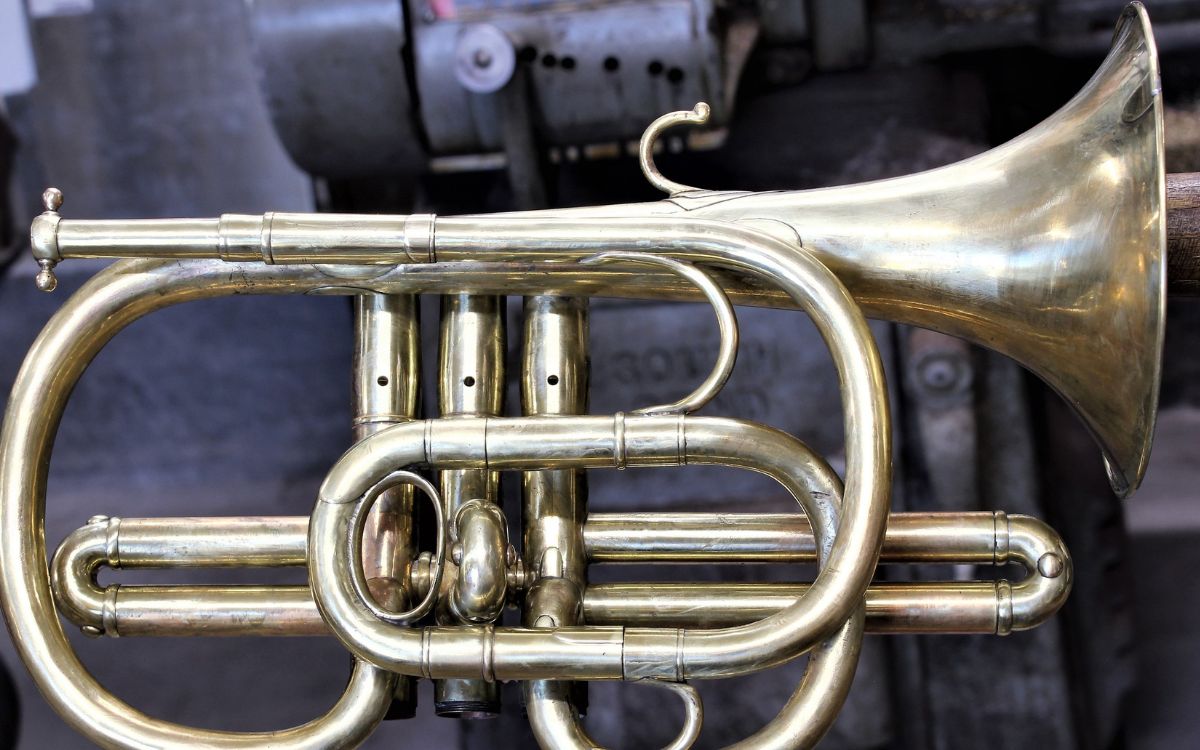Home>Instruments>Brass Instruments>How Brass Instruments Work Physics
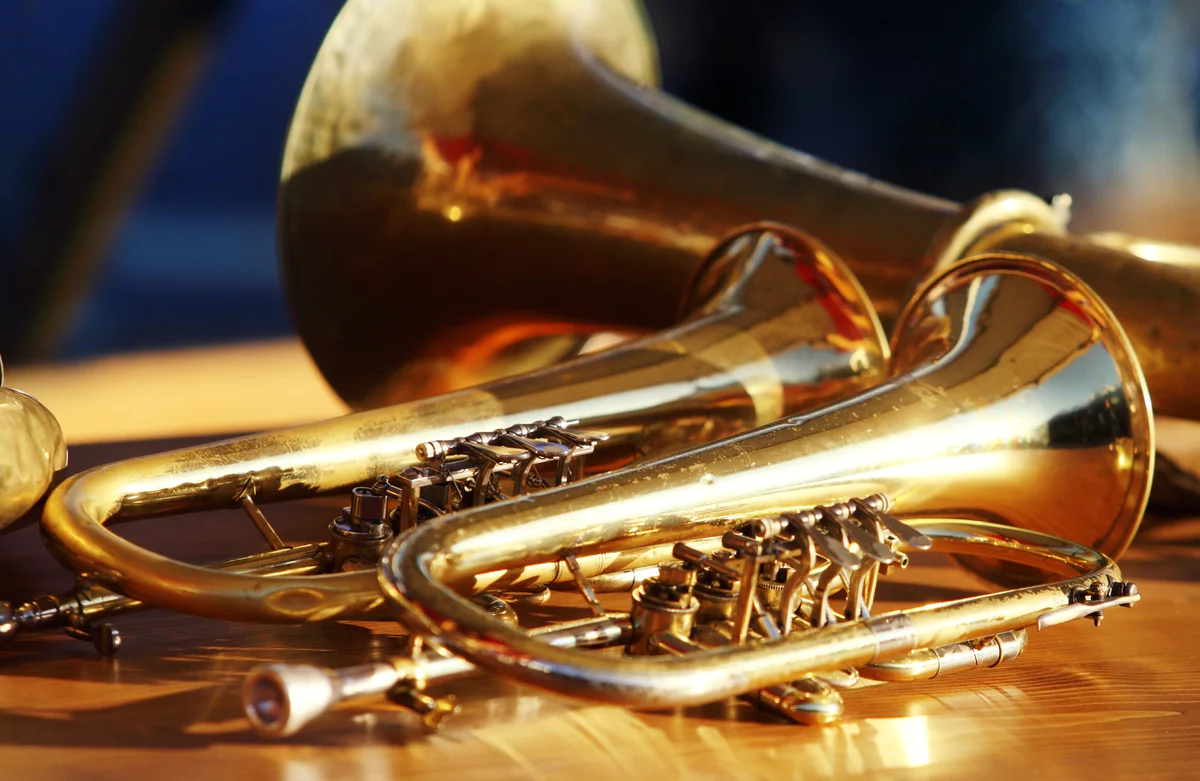

Brass Instruments
How Brass Instruments Work Physics
Modified: January 22, 2024
Discover the fascinating physics behind brass instruments. Learn how brass instruments work and produce their unique sound. Explore the science of music with brass instruments.
(Many of the links in this article redirect to a specific reviewed product. Your purchase of these products through affiliate links helps to generate commission for AudioLover.com, at no extra cost. Learn more)
Table of Contents
Introduction
Brass instruments have a long and rich history that spans centuries. From the majestic sound of the trumpet to the warm tones of the trombone, these instruments have captured the hearts and ears of music lovers around the world. But have you ever wondered how these fascinating instruments produce such beautiful melodies? In this article, we will delve into the physics behind brass instruments and explore the inner workings of these musical marvels.
Brass instruments are characterized by their distinctive metallic sound and their use of cylindrical or conical tubes to create and amplify sound. The key to understanding how these instruments work lies in the principles of sound and the techniques used by musicians to produce and control the sound waves.
Sound, as we know it, is a form of energy produced by vibrations. When a brass instrument is played, the musician creates vibrations by blowing air into a mouthpiece, which is connected to a series of tubing. These vibrations travel through the instrument, creating sound waves that resonate and produce the characteristic sound of the instrument.
The shape and size of the instrument’s tubing play a crucial role in determining the pitch and timbre of the sound produced. By altering the length of the tubing through the use of valves or slides, musicians can change the pitch of the notes they play.
Furthermore, the musician’s embouchure, which refers to the way they shape their lips and position them on the mouthpiece, is another essential factor in producing different sounds on a brass instrument. By adjusting the tension and pressure of their lips, musicians can control the airflow and manipulate the sound waves to create varying tones.
In addition to the physical techniques used by musicians, brass instruments also employ valves or slides to extend or shorten the length of the tubing. These mechanisms allow the player to access different harmonic series and play a wide range of notes. Valves enable the player to quickly change the length of the tubing, while slides offer a more precise and continuous adjustment.
Another intriguing aspect of brass instruments is the process of sound amplification. Unlike other instruments that rely on external amplifiers or resonance chambers, brass instruments use the vibrating air column within the tubing to amplify the sound. This phenomenon is achieved through the reflection and resonance of sound waves within the instrument.
Throughout this article, we will explore the fascinating world of brass instruments, delving into their history, the physics behind their sound production, and the different types of instruments that fall under this category. By the end, you will have a deeper understanding of how these remarkable instruments create the captivating melodies that have mesmerized audiences for centuries.
History of Brass Instruments
The history of brass instruments can be traced back to ancient civilizations. The earliest evidence of primitive brass instruments dates back to around 3000 BCE in Egypt, where metal pipes were used to create sound. However, the development and refinement of brass instruments as we know them today took place over many centuries.
A significant milestone in the history of brass instruments was the invention of the natural trumpet in the 14th century. These trumpets were made of a single piece of brass tubing and had no valves or slides. The musician playing the trumpet could only produce limited notes by altering the lip tension and airflow.
It was during the Renaissance period in the 15th and 16th centuries that advancements in instrument technology led to the evolution of brass instruments. The addition of finger holes and later, valves, allowed musicians to play a wider range of notes and explore different tonal possibilities. This innovation revolutionized the capabilities of brass instruments and opened doors to new musical possibilities.
The Baroque era of the 17th and 18th centuries saw the rise of virtuoso trumpet players who showcased the instrument’s ability to dazzle and captivate listeners in orchestras and royal courts. Composers such as Antonio Vivaldi and Johann Sebastian Bach composed intricate and challenging trumpet parts that showcased the expressive power and agility of the instrument.
During the 19th century, brass instruments underwent significant changes and developments. The invention of the valve system, attributed to Heinrich Stölzel and Friedrich Blühmel in the 1820s, revolutionized brass instrument design. Valves allowed musicians to produce a continuous range of notes and increased the versatility of the instruments.
This period also saw the emergence of new brass instruments such as the trombone, French horn, and tuba. These instruments added depth and richness to orchestral compositions and played a crucial role in shaping the orchestral sound of the Romantic era. The symphonies of Gustav Mahler and Richard Wagner, for example, feature prominent roles for these instruments, showcasing their expressive power and unique tonal qualities.
In the 20th century, brass instruments continued to evolve. The development of materials such as alloys and plastics allowed for greater durability and lighter weight. This led to the creation of instruments with improved playability and enhanced projection.
Today, brass instruments are an integral part of a wide range of musical genres, from classical and jazz to pop and rock. From the soaring melodies of the trumpet to the rhythmic pulse of the trombone, these instruments continue to captivate audiences and push the boundaries of musical expression.
The history of brass instruments is a testament to human creativity and ingenuity. From humble beginnings as simple metal tubes to the complex and versatile instruments we have today, brass instruments have stood the test of time and continue to bring joy and inspiration to countless musicians and listeners worldwide.
Basic Principles of Sound
Before diving into the workings of brass instruments, it’s essential to understand the basic principles of sound. Sound is a form of energy that travels in waves and requires a medium, such as air, to propagate. These waves are created by vibrations, which can be produced by various objects, including musical instruments.
Sound waves are characterized by several properties, including frequency, amplitude, and wavelength. Frequency refers to the number of vibrations or cycles per second and determines the pitch of a sound. Higher frequencies result in higher pitched sounds, while lower frequencies produce lower pitched sounds.
Amplitude, on the other hand, measures the intensity or loudness of a sound. Larger vibrations or more significant amplitude result in louder sounds, while smaller vibrations produce softer sounds.
Wavelength is the distance between two corresponding points on a sound wave, such as the distance from one peak to the next. It is inversely proportional to the frequency of the sound. Higher frequency sounds have shorter wavelengths, while lower frequency sounds have longer wavelengths.
When a brass instrument is played, it creates vibrations in the form of sound waves. These vibrations travel through the air and reach our ears, where they are detected by the auditory system, allowing us to perceive sound.
The complex system of valves, tubing, and the musician’s technique all work together to produce specific vibrations and control the pitch and timbre of the sound. By manipulating the airflow, tension in the lips, and altering the length of the tubing, musicians can create a wide range of sounds and musical expressions.
It is the precise control and manipulation of these vibrations that enable brass instruments, like the trumpet or trombone, to produce their distinct tones and captivating melodies. From the soaring and powerful sound of the trumpet to the rich and warm timbre of the trombone, brass instruments offer a vast range of sound possibilities.
Understanding the basic principles of sound is essential for musicians who play brass instruments. It provides the foundation for musicians to manipulate and control the sound they produce, allowing them to express their musical ideas and create meaningful and engaging performances.
Now that we have discussed the fundamentals of sound, let us explore how these principles come into play in the specific context of brass instruments.
How Sound is Produced in Brass Instruments
The production of sound in brass instruments is a fascinating process that involves the interaction of various elements, including the musician, the instrument’s design, and the physics of sound. Understanding how these factors come together to create beautiful melodies is key to appreciating the artistry behind playing brass instruments.
The primary mechanism for sound production in brass instruments is the player’s lips and embouchure. When a musician blows air into the instrument’s mouthpiece, their lips create vibrations. These vibrations are then transferred to the column of air within the instrument.
The shape and size of the instrument’s tubing play a crucial role in determining the pitch and timbre of the sound produced. The length of the tubing determines the fundamental frequency, which corresponds to the lowest pitch that can be produced. By altering the length of the tubing through the use of valves or slides, musicians can change the pitch of the notes they play.
When the musician blows air into the instrument, the vibrating air column inside the tubing interacts with the surrounding air. As the air column vibrates, it creates regions of high and low pressure. These pressure variations travel as sound waves through the air and generate the sound that we hear.
In addition to controlling the length of the vibrating air column, the musician’s embouchure, or the way they shape their lips and position them on the mouthpiece, also affects the sound produced. By adjusting the tension and pressure of their lips, the musician can control the airflow and manipulate the sound waves to create different tones and articulations.
This combination of lip vibrations, air column resonance, and precise control of the embouchure allows brass players to produce a wide range of sounds. From soft and mellow tones to powerful and piercing notes, the versatility of brass instruments is a testament to the skill and artistry of the musicians who play them.
It’s important to note that different instruments within the brass family have their own unique characteristics when it comes to sound production. For example, the trumpet, with its narrow tubing and cylindrical shape, produces a brighter and more focused sound. On the other hand, the trombone, with its wider tubing and conical shape, produces a warmer and more mellow sound.
The production of sound in brass instruments is a delicate interplay between physics, technique, and musicality. It requires a deep understanding of the instrument’s design and the nuances of playing techniques. The mastery of these elements allows brass players to convey emotion, express their musical ideas, and create captivating performances that resonate with audiences.
Now that we have explored how sound is produced in brass instruments, let us turn our attention to the role of valves in these remarkable musical instruments.
The Role of Lips and Embouchure
When it comes to playing brass instruments, the role of the lips and embouchure is of utmost importance. The embouchure refers to the way a musician shapes their lips and positions them on the mouthpiece of the instrument. This technique is a crucial aspect of producing the desired sound and controlling the nuances of the music.
The lips are responsible for creating vibrations, which are essential for generating sound in brass instruments. When a musician blows air into the mouthpiece, the air stream causes the lips to vibrate. These vibrations travel through the instrument, creating sound waves that resonate and produce the characteristic tones of the instrument.
The positioning of the lips on the mouthpiece and the tension applied play a significant role in determining the quality and pitch of the sound produced. By adjusting the tension and pressure of the lips, musicians can control the airflow and manipulate the sound waves to create different tones and articulations.
There are various techniques and theories surrounding embouchure in brass playing, and it can vary from one musician to another. However, some main principles remain constant across all brass instruments:
- Formation: The embouchure formation involves positioning the corners of the mouth to create a firm and stable seal around the mouthpiece. The top and bottom lips should be relaxed and placed evenly on the surface of the mouthpiece.
- Centering: The musician aims to produce the sound in the center of the lips, maintaining an even and consistent tone. This requires precise control and balance of air pressure.
- Flexibility: The embouchure must be flexible enough to accommodate changes in pitch, dynamics, and style of playing. This flexibility allows musicians to navigate through various musical passages with ease.
- Air Support: Along with the embouchure, proper breath support is crucial for producing a strong and resonant sound. Musicians must employ diaphragmatic breathing techniques to provide the necessary airflow and support the lip vibrations.
The development of a strong and efficient embouchure requires consistent practice, patience, and guidance from experienced instructors. Musicians must develop muscle strength and endurance to sustain long playing sessions and the ability to control and manipulate their sound with precision.
It is worth noting the personal nature of embouchure development. Each player may have slight variations in technique due to individual anatomy, strengths, and weaknesses. What works for one musician may not work for another, and it is essential for each player to find their unique embouchure setup that allows them to achieve their desired sound.
The mastery of embouchure in brass playing is a delicate balance of science, artistry, and personal expression. It is through this technique that musicians can breathe life into their instruments, creating a wide range of tones and emotions that capture the hearts and ears of audiences.
Now that we have explored the role of the lips and embouchure, let us delve into the fascinating world of the vibrating air column within brass instruments.
The Vibrating Air Column
At the core of every brass instrument lies the vibrating air column. This column of air is responsible for producing the rich and resonant sound that characterizes these instruments. Understanding how the air column vibrates and interacts with the instrument is key to mastering the art of playing brass instruments.
When a musician blows air into the mouthpiece of a brass instrument, the air column inside the instrument starts to vibrate. These vibrations are initiated and controlled by the player’s embouchure and the manipulation of the air flow.
For brass instruments with a cylindrical shape, such as the trumpet or cornet, the air column vibrates in a similar manner to a pipe closed at one end, like an organ pipe or flute. This type of vibration is known as ‘closed-end’ or ‘quarter-wave’ resonance. The closed end of the pipe is formed by the player’s lips against the mouthpiece, while the open end is the bell of the instrument.
On the other hand, brass instruments with a conical shape, such as the trombone or French horn, exhibit ‘open-end’ or ‘half-wave’ resonance. In these instruments, the air column is open at both ends, allowing for different modes of vibration.
As the musician changes the pitch by altering the length of the tubing using valves or slides, different harmonic series or overtones are produced within the vibrating air column. These harmonic series are a sequence of tones that are multiples of the fundamental frequency.
By manipulating the embouchure, air pressure, and valve/slide combinations, musicians can bring out specific harmonics or alter the intensity of certain overtones, resulting in different timbres and tonal qualities. This control over the harmonic series allows brass players to create a wide range of expressive and dynamic sounds.
The vibrating air column acts as a resonator, amplifying the sound produced by the player. As the sound waves bounce back and forth within the instrument, they reinforce certain frequencies and create the characteristic resonant sound associated with brass instruments. The size and shape of the instrument, along with the characteristics of the air column, play a significant role in determining the unique tonal qualities of each instrument.
It’s important to note that different playing techniques, such as tonguing, slurring, and vibrato, also have an impact on the vibrating air column. Changes in articulation and airflow will affect the shape and intensity of the vibrations, ultimately altering the sound produced.
Mastering the intricacies of the vibrating air column is a lifelong pursuit for brass players. Through consistent practice, experimentation, and honing of technique, musicians can harness the power of the air column’s resonance to create captivating and expressive performances.
Now that we have explored the fascinating world of the vibrating air column, let’s turn our attention to the function of valves in brass instruments.
The Function of Valves
In brass instruments, valves play a crucial role in expanding the range and flexibility of the instrument. Valves provide a mechanism for quickly and efficiently changing the length of the tubing, allowing musicians to access different harmonics, increase the range, and navigate through various musical passages with ease.
Instruments like the trumpet, cornet, and French horn typically feature piston valves, while the trombone uses a slide mechanism. Both types of valves achieve the same goal – altering the length of the tubing to change the pitch of the instrument.
Piston valves consist of cylindrical casing with holes and ports, along with a valve piston that moves up and down. When the valve is not depressed, the air flows through the main tubing. When the valve is depressed, the piston rises, redirecting the air through additional lengths of tubing called valve slides. This extra tubing lengthens the overall air column, lowering the pitch of the played note.
By depressing different combinations of valves, musicians can access different valve slides and lengths of tubing, playing a series of notes within the harmonic series. This allows for a vast range of pitches, extending the instrument’s capabilities and providing the musician with the full chromatic scale.
While piston valves provide a precise and quick change in pitch, compensating for intonation, they can cause a more confined airflow due to the bends and curves within the valve casing. This can affect the overall response and flexibility of the instrument. The skilled player must develop techniques like lip trills and alternate valve fingerings to compensate for these limitations.
In contrast, the trombone uses a slide mechanism to change the length of the tubing. The player extends or retracts the slide to adjust the pitch. This slide allows for a continuous range of notes, giving the trombone greater flexibility in playing microtones and glissandi. The trombone’s slide mechanism offers the player greater control over pitch and intonation, but it requires more physical coordination and precision.
Understanding and mastering the use of valves is essential for brass players. Through countless hours of practice and exploration, musicians learn the precise combinations of valve positions needed to produce desired pitches, intonation, and stylistic effects. The ability to execute rapid and accurate valve changes is a hallmark of skilled brass playing, enabling musicians to navigate complex musical passages and express their musical ideas fluently.
The function of valves in brass instruments showcases the fusion of technology and artistry. With the innovative design of valves, brass musicians can access a vast range of notes, enriching the musical landscape and contributing to the undeniable charm and versatility of these instruments.
Now that we have explored the function of valves, let’s discover how sound amplification takes place in brass instruments.
Sound Amplification in Brass Instruments
One of the fascinating aspects of brass instruments is their ability to produce sound without the need for external amplification. Unlike electric guitars or keyboards, which rely on electronic amplifiers, brass instruments use the vibrating air column within the instrument to amplify sound naturally.
Sound amplification in brass instruments occurs through a combination of two phenomena: reflection and resonance.
When the musician blows air into the instrument, the vibrating air column produces sound waves that travel through the tubing. As these sound waves reach the open end of the instrument, they encounter a sudden change in impedance. This change causes some of the sound waves to reflect back towards the player while allowing others to radiate outward. This reflective process contributes to the amplification of sound.
In addition to reflection, resonance also plays a significant role in sound amplification. The air column within the instrument acts as a resonator, reinforcing certain frequencies or harmonics. As the sound waves bounce back and forth within the instrument, they interact with the vibrating air column and create a strong resonance, resulting in a more pronounced and projected sound.
The shape and design of the instrument also contribute to sound amplification. The flare of the bell and the taper of the tubing help to focus and direct the sound waves outward, enhancing projection and clarity. These design elements ensure that the sound produced by the vibrating air column is efficiently radiated and projected to reach the audience.
It’s worth noting that the musician’s technique, embouchure, and control over the air column play a significant role in sound amplification. Skilled brass players develop the ability to manipulate the air flow and embouchure to produce a focused and resonant sound. By directing the air stream and controlling the vibrations within the instrument, they can optimize the sound amplification process and create a powerful and expressive performance.
Sound amplification in brass instruments is a beautiful synergy between the physics of sound, instrument design, and the musician’s artistry. Through the interplay of reflection, resonance, and skillful technique, brass instruments have the ability to fill concert halls, captivate audiences, and evoke a range of emotions.
Now that we have explored sound amplification, let’s move on to the different types of brass instruments and their unique characteristics.
Different Types of Brass Instruments
The family of brass instruments encompasses a wide range of instruments, each with its own unique characteristics and distinct sound. Let’s explore some of the most commonly recognized brass instruments.
1. Trumpet: The trumpet is a small, cylindrical brass instrument with three valve pistons. Known for its bright and piercing sound, the trumpet is versatile and is used in various musical genres, from classical and jazz to pop and rock.
2. Trombone: The trombone is a large brass instrument with a slide mechanism. Its distinctive slide allows for continuous changes in pitch, providing a remarkable level of flexibility and expressive possibilities. The trombone produces rich, warm, and mellow tones.
3. French Horn: The French horn, with its iconic circular shape and coiled tubing, adds depth and richness to orchestral compositions. Its sound is characterized by its warm and smooth quality, often likened to the voice of a noble, lyrical protagonist.
4. Tuba: The tuba is the largest and deepest-pitched instrument in the brass family. Its broad, conical shape and 4 to 6 valves allow for a deep and resonant sound, providing a solid foundation in ensembles such as orchestras and brass bands.
5. Euphonium: The euphonium is similar in shape to the tuba but is smaller in size and produces a more mellow and lyrical sound. It is often featured as a solo instrument in concert bands and brass ensembles.
These are just a few examples of the brass instruments commonly encountered. Other instruments, such as the cornet, flugelhorn, baritone horn, and sousaphone, also belong to the brass family, each contributing its own unique timbre and role in various musical settings.
Brass instruments offer a spectrum of sounds, from the brilliant and powerful to the serene and melodic. They contribute to the rich tapestry of musical compositions, playing essential roles in orchestras, wind ensembles, jazz bands, and marching bands.
Each type of brass instrument requires specialized technique and skilled manipulation to produce its characteristic sound. Musicians who specialize in brass instruments undergo years of training and practice to master the intricacies of their chosen instrument.
Whether it’s the triumphant fanfare of a trumpet, the soulful melodies of a trombone, or the majestic harmonies of a French horn, brass instruments continue to captivate audiences, leaving a lasting impression with their captivating sound and expressive capabilities.
Now, armed with knowledge of the different types of brass instruments, we have gained a deeper understanding and appreciation for the world of brass music.
Conclusion
Brass instruments are a captivating and integral part of the musical world. Through their rich history and fascinating physics, these instruments have evolved to produce the distinctive, vibrant, and powerful sounds that have enchanted audiences for centuries.
From the early origins of simple metal tubes to the intricate designs and mechanisms of modern brass instruments, advancements in technology and musical ingenuity have shaped the evolution of these instruments. The mastery of brass playing requires not only technical skill but also a deep understanding of sound production and control.
We have explored the basic principles of sound, diving into how vibrations, frequency, amplitude, and wavelength contribute to the creation of sound waves. In brass instruments, sound is generated through the interaction of the musician’s embouchure, the vibrating air column, and the instrument’s design.
The embouchure, formed by the positioning and control of the lips on the mouthpiece, is the catalyst for creating vibrations. These vibrations are then transferred to the air column, which amplifies and shapes the resulting sound waves. The manipulation of valves or slides allows for pitch variation and access to different harmonic series, enriching the range and musical possibilities of brass instruments.
Sound amplification occurs through a combination of reflection and resonance within the instrument. The shape, design, and the skilled control of the musician contribute to the projection and clarity of the sound produced.
Throughout our exploration, we have also discovered the different types of brass instruments, each offering its own unique sound and playing experience. From the bright and piercing tones of the trumpet to the warm and mellow sounds of the tuba, these instruments lend their distinct character to a variety of musical genres and ensembles.
Mastering a brass instrument requires years of practice, dedication, and an unwavering passion for the art form. Brass musicians hone their skills, refining their embouchure technique, manipulating the vibrating air column, and unlocking the full potential of their chosen instrument.
Brass instruments continue to be at the heart of musical performances across cultures and genres. Their expressive capabilities, from soaring melodies to vibrant fanfares, evoke a wide range of emotions and captivate audiences worldwide.
As we conclude our exploration of brass instruments, we invite you to further delve into their world. Whether as a listener, performer, or enthusiast, the journey into the realm of brass music promises to be a rewarding and fulfilling one.
So, embrace the power and beauty of brass instruments, and let the enchanting sounds of these magnificent instruments fill your heart and uplift your soul.


